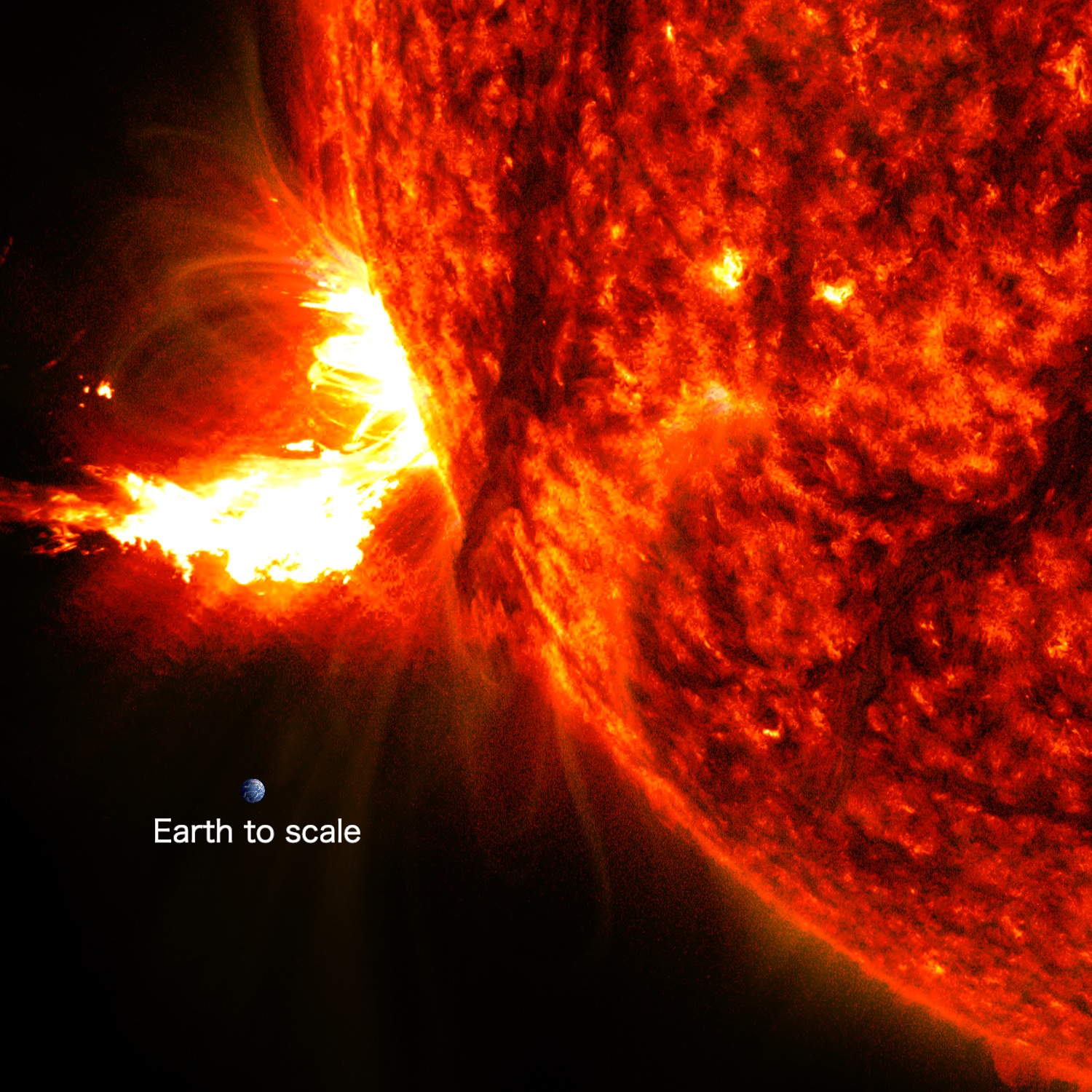Sun Releases 50th X flare of Solar Cycle 25, Quickly Followed by Two More

NASA’s Solar Dynamics Observatory captured this image of a solar flare – as seen in the bright eruption on the lower left – at 22:03 UTC on May 31, 2024. The image shows a blend of 131 Angstrom and 304 Angstrom light, subsets of extreme ultraviolet light. Credit: NASA/SDO

NASA’s Solar Dynamics Observatory captured this image of a solar flare – as seen in the bright eruption on the lower left – at 22:03 UTC on May 31, 2024. The image shows a blend of 131 Angstrom and 304 Angstrom light, subsets of extreme ultraviolet light. Credit: NASA/SDO

NASA’s Solar Dynamics Observatory captured this image of a solar flare – as seen in the bright eruption on the lower left – at 22:03 UTC on May 31, 2024. The image shows 131 Angstrom light, a subset of extreme ultraviolet light. Credit: NASA/SDO

NASA’s Solar Dynamics Observatory captured this image of a solar flare – as seen in the bright eruption on the lower left – at 08:50 UTC on June 1, 2024. The image shows 131 Angstrom light, a subset of extreme ultraviolet light. Credit: NASA/SDO

NASA’s Solar Dynamics Observatory captured this image of a solar flare – as seen in the bright eruption on the lower left – at 18:37 UTC on June 1, 2024. The image shows 131 Angstrom light, a subset of extreme ultraviolet light. Credit: NASA/SDO

NASA’s Solar Dynamics Observatory captured this image of a solar flare – as seen in the bright eruption on the lower left – at 18:37 UTC on June 1, 2024. The image shows 171 Angstrom light, a subset of extreme ultraviolet light. Credit: NASA/SDO

The Sun emitted two strong solar flares, peaking at 4:48 a.m. and 2:36 p.m. ET on Saturday, June 1, 2024. NASA’s Solar Dynamics Observatory, which watches the Sun constantly, captured images of the events. The first flare is classified as an X1.4 flare, and the second flare is classified as X1.0. The images show a subset of extreme ultraviolet light that highlights the extremely hot material in flares and which is colorized in blue and gold. Credit: NASA/SDO

NASA’s Solar Dynamics Observatory captured this image of a solar flare – as seen in the bright eruption on the lower left – at 08:50 UTC on June 1, 2024. The image shows 171 Angstrom light, a subset of extreme ultraviolet light. Credit: NASA/SDO
For More Information
Credits
Please give credit for this item to:
NASA's Goddard Space Flight Center. However, individual items should be credited as indicated above.
Producer
- Scott Wiessinger (KBR Wyle Services, LLC)
Writers
- Vanessa Thomas (InuTeq, LLC)
- Sarah Frazier (SGT)
Public affairs officer
- Sarah Frazier (SGT)
Release date
This page was originally published on Monday, June 3, 2024.
This page was last updated on Monday, June 3, 2024 at 11:10 AM EDT.
